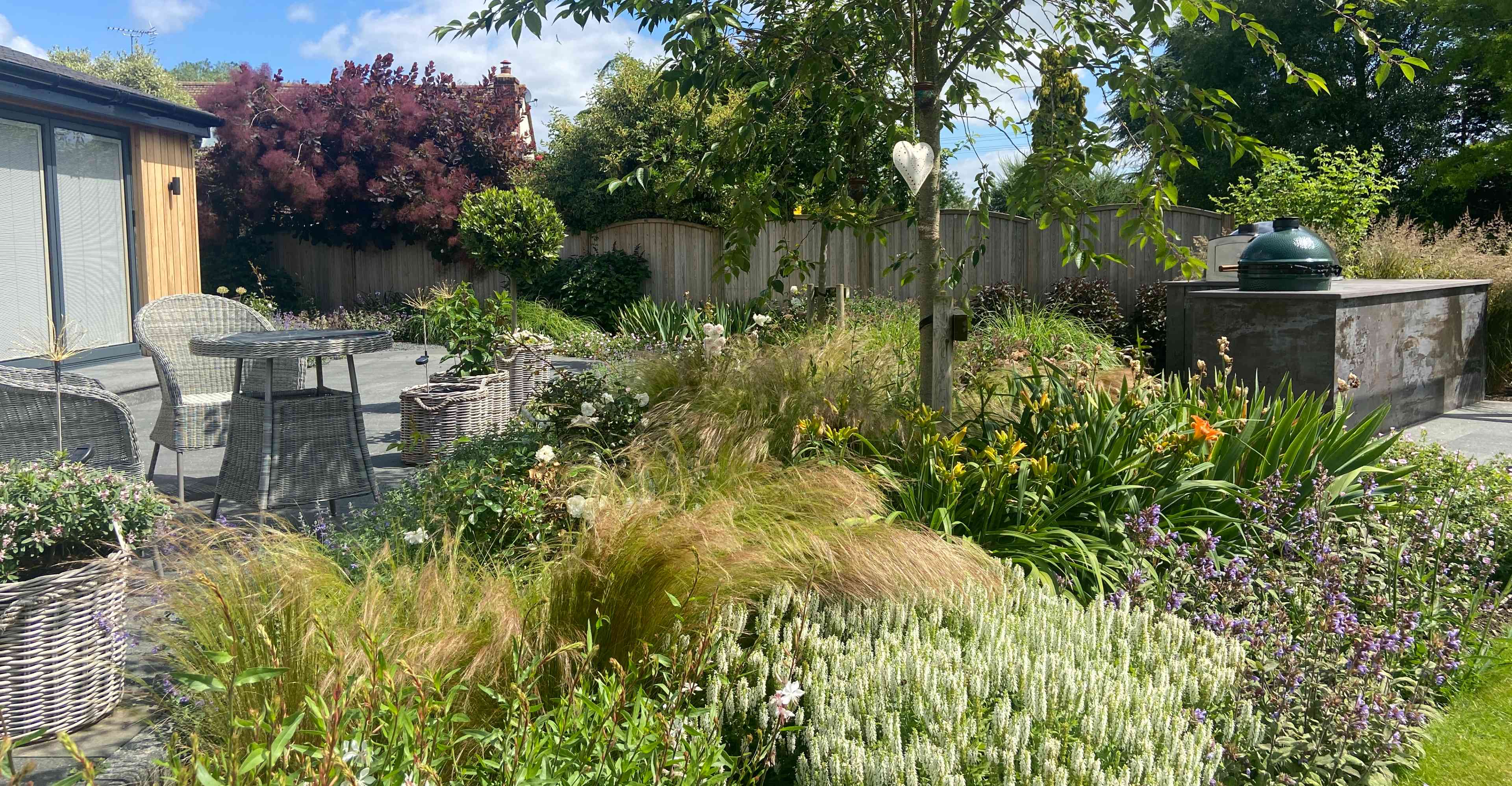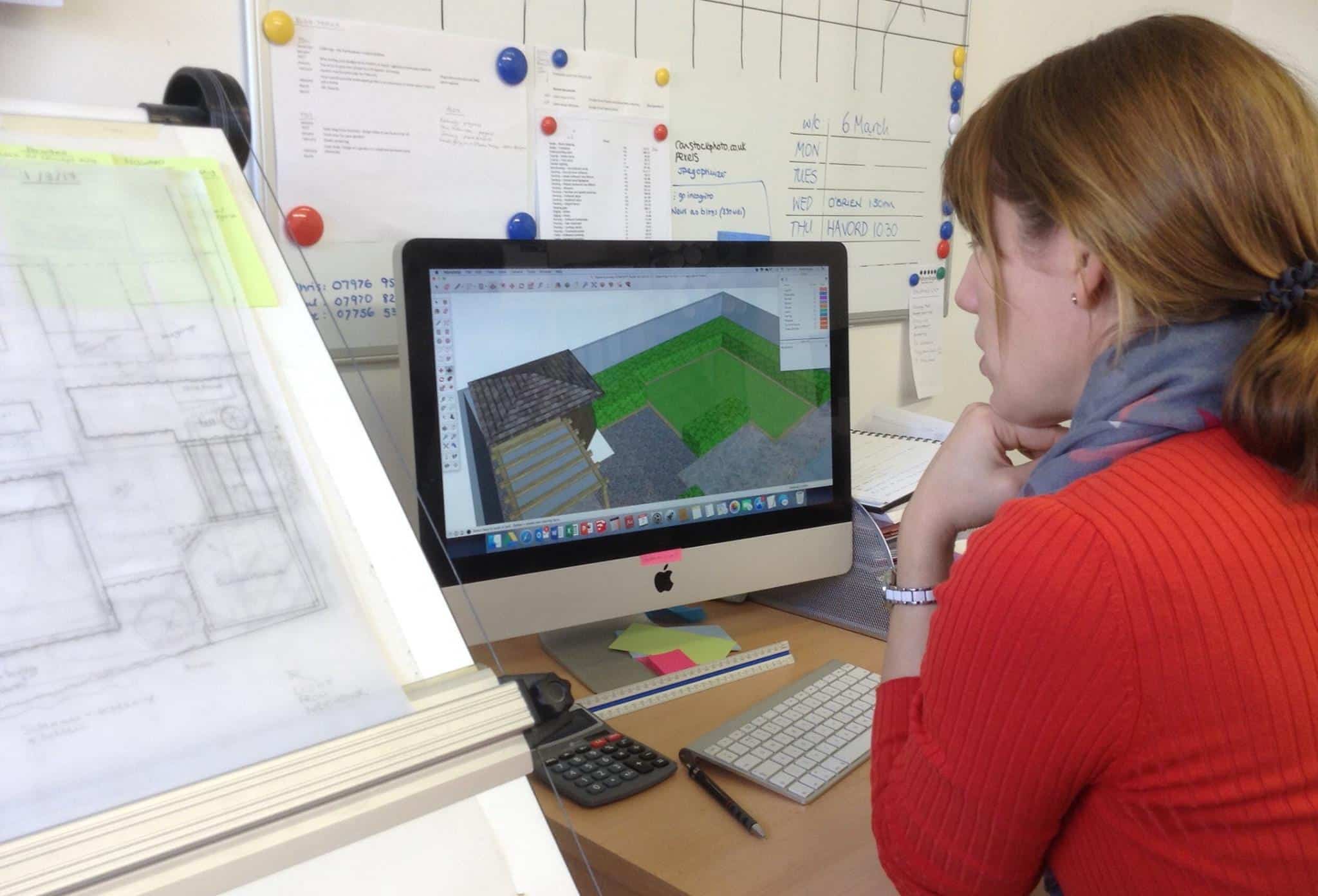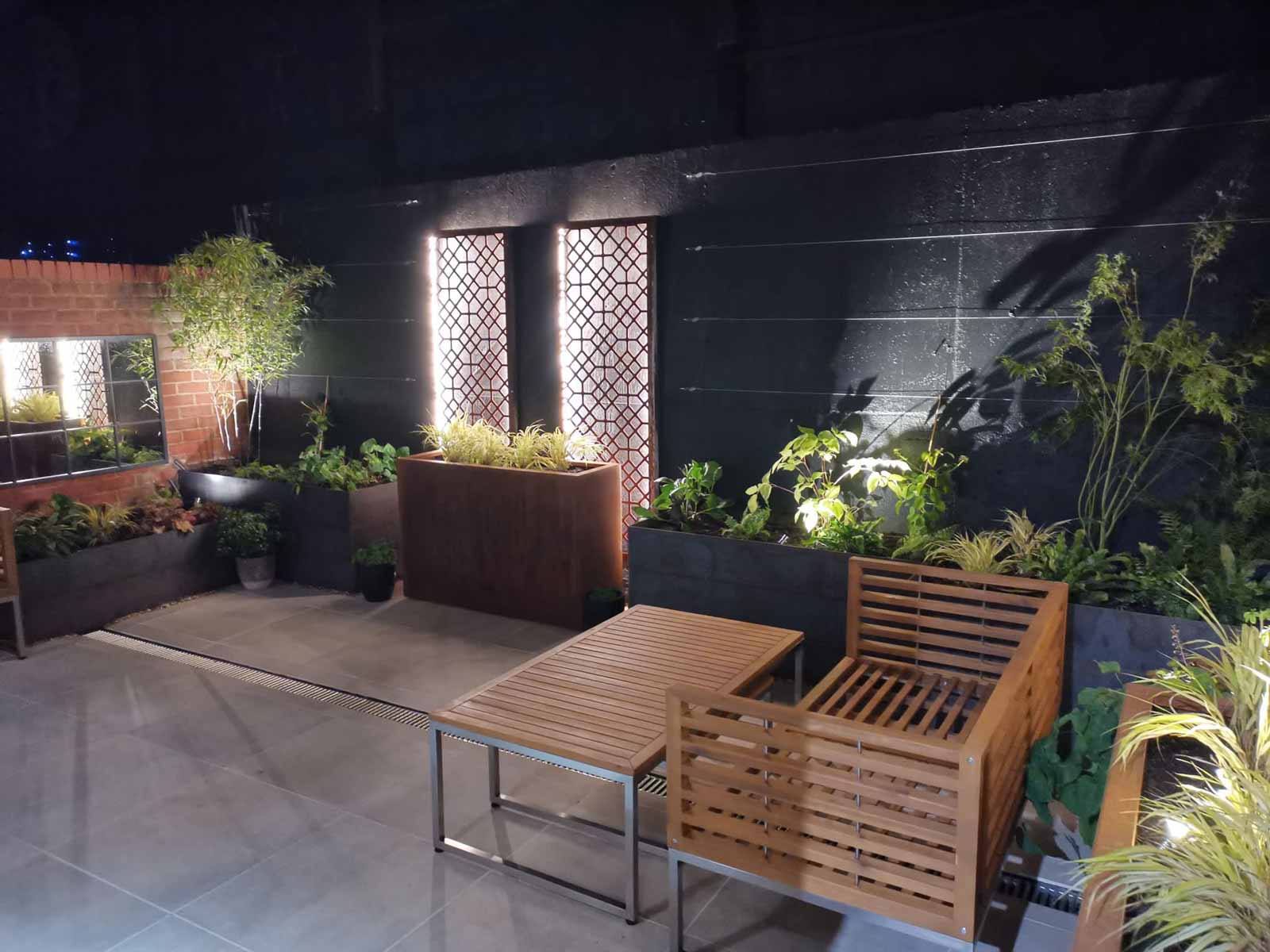14 Oct What Does A Garden Designer Do?
Katie answers the questions “What Does A Garden Designer Do?” And “Why Do I Need A Garden Designer?”
It’s only natural, when researching the cost of upgrading your garden, to question every input. A garden makeover is an investment and you want to be confident you will get best value for money.
No doubt, you’ll be wondering if hiring a garden designer is a necessary expense or is it a luxury that only a few people can afford? After all, it’s surely not difficult to a plan so the landscaper knows what to build where?
Understanding what a garden designer does allows you to make an informed decision about which professionals to hire.
Let’s look closer at the role of a garden designer.
Katie working on a 3D visualisation for a back garden design
What Does A Garden Designer Do?
Would you build a house extension without consulting an architect? Of course not! You need professionally drawn plans to ensure that the building is safe, durable, looks the way you want it to look and is set out so that it ‘flows’ seamlessly from zone to zone. A garden designer is the outdoor equivalent of an architect.
A good garden designer will help you refine your wish list into “essentials” and “nice to have’s” according to how you want to use your garden. They will assess the space, discuss build budgets with you and come up with a plan that not only meets of your needs, but is also visually pleasing and can realistically be built within your budget.
What most clients don’t realise, is that during any construction project (and that includes a garden makeover) the householder has a legal responsibility under the CDM (2015) regulations, for the safety of everybody on their property during the build. That means everybody – friends, family, landscapers, delivery people – anyone who sets foot on the property. When you hire a garden designer, you can appoint them ‘principal designer’. This passes responsibility for complying with CDM regulations to the designer.
What does a garden designer do that a builder or landscaper doesn’t?
Having a good understanding of soil science, landscaping materials, construction techniques, plants and costs, means that a qualified garden designer can create a design that is buildable, usable and suits the client’s budget.
Not sure what you want in your garden? A good garden designer will never force their ideas upon you. Instead they will spend time brainstorming with you to find out what you like and dislike, how you are likely to use your outdoor space and how you want it to be styled. A landscaper on the other hand will normally await your instructions – and build exactly what you ask for. Once the garden is built – it’s too late to realise you’ve overlooked something important.
It’s not unusual for a garden designer to suggest ideas that the client hadn’t even considered. That’s what makes the garden design process all the more exciting!
Thanks to Katie at Tapestry Design Studios, this tiny courtyard garden was completely transformed in a way the client had never even imagined.
Click here for the full the case study
The garden design process
Your garden designer will take accurate measurements of the space, making notes of things you might think are irrelevant, such as the position of windows, doors, gates, downpipes, manhole covers and slopes. For very large or very complex gardens, they may arrange topographical and hydrological surveys so they know exactly what they’re working with.
While taking measurements, your garden designer will also take note of any features that you want to keep. Trees, outbuildings, water features, special plants etc.
As well as looking at your garden, a garden designer will consider the surroundings. Is there anything that needs to be screened? Are there any borrowed views that can enhance the garden? What about potential problems from neighbours or passers by?
With all of that information firmly lodged in their notebook and buzzing with ideas, the garden designer will combine skills of creativity with technical knowledge of constructions, costs and budgeting to draw a plan so that you can visualise your new garden.
When planning a layout, a garden designer will consider
- Views from all the windows and access points
- How to deal to make the garden flow logically so that every bit of the space is used to it’s full potential
- Where the sun falls at different times of the day
- Ways to enhance privacy and/or reduce noise pollution from outside the garden
- Creating areas for quiet contemplation, activities, entertaining
- Which materials will best suit the client’s personal taste and style
- Ongoing maintenance levels
What are the benefits of a professionally drawn garden design?
- It will be to scale, for accurate costing and budgeting as well as to be build from.
- Enables phasing of garden construction, ie. if budget requires the build to take place in stages. Even if worked on over time, client will be sure to get the end vision -a garden which works as a whole, rather than piecemeal.
- It will provide solutions the client will not have thought of and may prefer, or new ideas if the client needs them.
- Clever design can actually save client money, also save on space where this is tight. Also provides a strong structure which will last, in terms of style and aesthetics (obviously depends on how well its actually built!)
- Reflects the personality of the client and their ability to maintain (time/skill level).
- An attractive garden adds kerb appeal to a property and can increase its sale value
Most garden designs are presented as a 2D layout showing how the garden will look from above. A 3D render of a garden design allows clients to understand the plan better. For the landscaper, plans are presented with measurements clearly shown.
What Information Does A Landscaper Need To Build Quotes With?
One of the roles of a garden designer, is creating an accurate document for the landscaper to quote from. No decent landscaper can wander into a garden, take a look around, scratch their head and come up with an accurate price for the build. If anyone does that for you – be very cynical, you’re probably going to pay way over the odds in ‘extras’.
A good landscaping quote takes a good few days to prepare. Every part of the build process must be planned and costed. That includes clearance, groundworks, materials, specialist machinery hire, skilled landscaper and external trades such as electricians.
A garden design shows measurements and construction details so that a landscaper can accurately calculate project inputs. Measurements need to be in 3D – not just an aerial view of the layout, but heights and depths too.
The other organisation who may need to see detailed drawings of your garden design, is the local planning authority. Not all gardens need planning permission, but if it is required, a professional plan is a great help to the decision making process.
So the answer to the question “what does a garden designer do?” Is – they enable you to have the best garden you possible can for your budget AND they provide the basis for a smooth running, and efficient project. Well worth the investment.
Discover what garden owners are saying about Tapestry Design Studios








No Comments